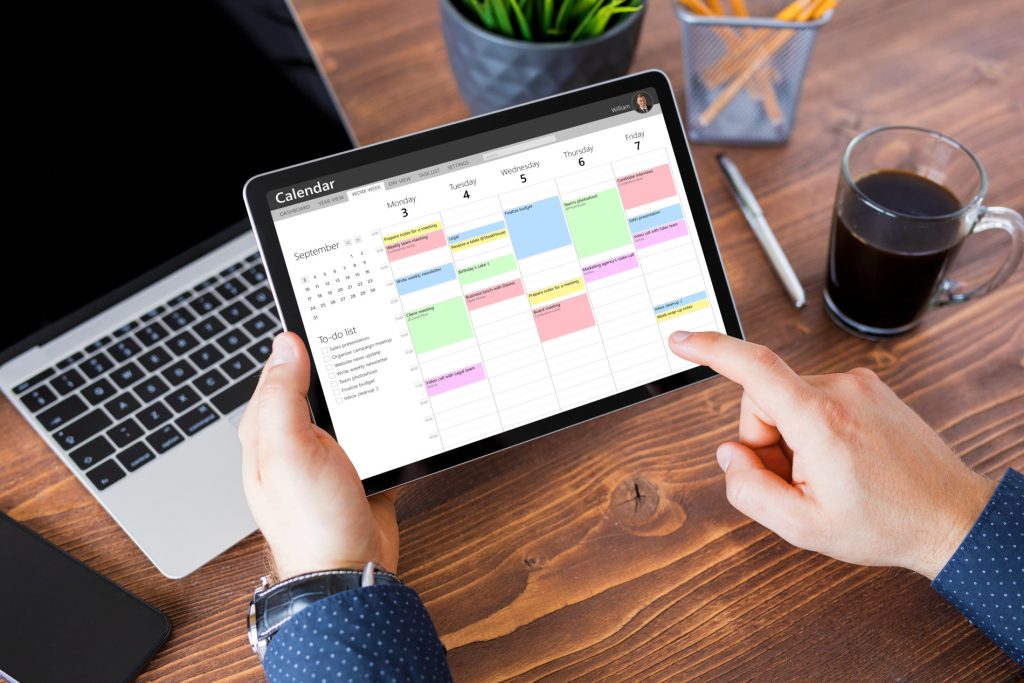5 easy ways to set professional boundaries at work
RECRUITMENT • May 7, 2024

If you can’t remember the last time you took a full lunch break, or are frequently clocking off late in order to finish tasks, you may need to consider setting professional boundaries at work.
We get it. You want to make a good impression, show that you’re good at your job, and let your employer know that you are dedicated to the company. You can do all of these things while maintaining a healthy work-life balance.
The latest data from the Health and Safety Executive (HSE) shows that 35.2 million working days were lost to work-related ill health in 2022/23. Stress, anxiety and depression accounted for almost 24 million of these days, suggesting that employees need to embrace a better work-life balance in order to reduce their risk of burnout and other work-related mental health conditions.
Setting professional boundaries is a great way to enforce a healthier work-life balance. It’s so easy to log off late when you’ve got multiple deadlines to meet, or to miss out on a lunch break when you’re focusing on a project. This will happen from time-to-time, but if it is a regular occurrence and is affecting your mental health, now is the time to consider setting professional boundaries to help prioritise and protect your time.
So, how can you do this? In this post, we’ll explore:
- 5 ways you can set boundaries in the workplace
- Advice on implementing these boundaries and incorporating them into your day-to-day.
1) Limit notifications from work-related apps
Teams, Outlook, WhatsApp Slack. If work-related notifications are pinging off your phone on an evening or when you’re trying to enjoy a well-deserved weekend reset, now is the time to mute those WhatsApp group chats and turn off the Slack notifications.
If you absolutely must have work-related notifications on your phone, limit these to working hours only. Turn them off during evenings and weekends so you can enjoy your downtime. You could also change your status to ‘away’ or ‘unavailable’ on work-related apps so colleagues can visibly see you are not available.
Where possible, it can be really useful to have a separate mobile phone specifically for work. This means you can separate your work and personal life, and only include personal apps on your own mobile phone. You can then turn off your work phone outside of work hours.
2) Aim to start and finish work on time
If you’re the first to arrive at the office and the last to leave, you’re likely working longer than necessary. With looming deadlines and a culture that applauds being busy, it can be easy to stay late or log on outside of hours, but this can eat into your personal time, impacting your work-life balance.
Aim to work your allocated working hours and only work over if absolutely necessary. For some roles, there will be occasions where out-of-hours work is required – that’s fine, but be sure to take the time back where possible, and work with your manager and your team to ensure you are supported during especially busy times. Can another colleague support so you don’t need to work additional hours, or can you work from home the day after a late finish, giving you some extra time back in the morning?
3) Prioritise your breaks
Whatever your role, everyone should take regular breaks. This allows you to refresh and reset, and can actually make you more productive. If you are struggling on a task, or feel like you’re stuck in a rut with a project, take a break from the screen to do something that relaxes your mind. This could be heading out on a walk, doing a workout, or simply taking 15 minutes to listen to some music or read a book.
If you’re struggling to think of ideas, stepping away and taking the pressure off can help those ideas flow more freely. If you’re stuck on a task or are experiencing technical issues, this can be stressful so taking a break to allow yourself some calm can make all the difference.
If you find it hard to prioritise your break times, block them out in your diary. That way, colleagues can see when you’re likely to be unavailable and can avoid contacting your during these times. Treat your breaks like a meeting – book them in your calendar and stick to them!

4) Time block your tasks and projects
Time-blocking is a gamechanger for time management. It’s a great way to ensure tasks and projects are allocated adequate work time, and is also a good way to set boundaries, giving colleagues sight of what you are working on and when you shouldn’t be disturbed.
Some people choose to only time block important projects so they have pre-scheduled time to work on this, while others may decide to time-block their whole day, including admin time, smaller tasks and breaks. If you are struggling to prioritise breaks, or find you are working later most days, time blocking your whole working day could be helpful. It could help you identify whether you are perhaps taking on too much work, for example, it could uncover that you don’t actually have enough time in the day to be taking on the amount of work you are committing to. This should then prompt a conversation with your line manager – they should then help you prioritise or reallocate tasks and projects to ensure your workload is manageable and your goals achievable.
5) Communicate – How do you like to work?
Your work-related boundaries will likely be different to others in your team. Everyone is different and likes to work in different ways, so be sure to communicate with your manager and your team so everyone understands how you like to work.
Some teams may choose to only hold meetings within certain times, or on certain days. This can give people meeting-free blocks of time so they can focus and work on bigger projects. Teams could avoid scheduling meetings for first thing or right at the end of the day – this means colleagues can settle into their working day before being thrown into a meeting, and also reduces the possibility of meetings running over outside of working hours.
Many people find they work differently in the morning versus the afternoon, for example, some are more productive in the morning so would rather schedule meetings in the afternoon so they can get all of their focused work done in the first half of the day.
Have an open discussion with your team and those you work closely with so you can also be aware of how everybody likes to work. You won’t always be able to meet everyone’s needs but making a conscious effort to work in a way that suits the team will create a more productive and less stressed environment.
Conclusion
Setting boundaries can be difficult, but these five easy ways can help. Most importantly, be sure to communicate with your manager and your team. Changes can not be made if people aren’t aware of what works for you.
Take regular breaks, and plan your day so you can manage stakeholder expectations while maintaining a healthy work-life balance.
If you are a line manager or senior member of staff, be sure to model this behaviour so junior members of the team or new colleagues understand how to set boundaries and embrace a healthy work-life balance.
Want more tips and tricks on managing your wellbeing at work? Read Associate Director Jade Whitmore’s experience with stress, and how she manages her symptoms. You can also watch #TeamGlee discuss the ways they lift their mood on days they are feeling down.



